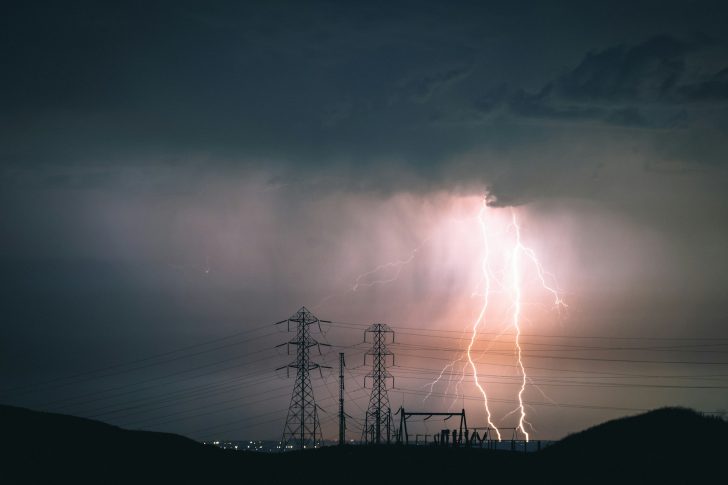Thunderstorms can arrive faster than your weather app updates, especially in places like New Hampshire. With severe thunderstorms forecasted this Thursday, and recent lightning strikes injuring locals in Henniker and Hooksett, it is time to get serious.
Here’s how you can ensure your safety:
Check the Weather Before Stepping Out
Before heading outside, especially between 3 and 9 p.m. in New Hampshire, always check for thunderstorm warnings. Don’t rely on clear skies. Lightning can strike even when it looks calm. Forecasts from WMUR or NOAA are reliable and can help you decide if that hike or backyard project can wait.
Lightning can strike 25 miles away from its storm. If you hear thunder, that means lightning is already close enough to hit you. Don’t wait for visible flashes. Treat thunder like a warning siren and get to safety immediately. No outdoor spot is safe once thunder is audible.

Casey / Unsplash / If a thunderstorm is approaching, go inside a sturdy building with wiring and plumbing. A tent, pavilion, or picnic shelter won’t cut it.
If no building is nearby, get into a car with a metal roof and roll the windows up. Avoid touching metal parts inside the
Don’t rush back out after a storm passes. Wait at least 30 minutes after the last rumble of thunder. Storms often come in waves, and that "quiet" could be the pause before another round.
Avoid Water and Metal
Both water and metal conduct electricity. If you are caught outside, get far away from lakes, rivers, and pools. Steer clear of bikes, fences, and metal tools. Lightning looks for the fastest path to ground, and these materials give it a shortcut straight through you.
Avoid open fields, hilltops, and cliffs. The higher you are, the easier it is for lightning to find you. Flatten yourself as low as possible if you can’t get to shelter.
Trees Aren’t Safe!
It seems like a quick fix, but standing under a tree is one of the worst places to be during a thunderstorm. Lightning often strikes the tallest object around, and that could be the tree you're next to. If it hits, electricity can travel through the tree and into you.

Ralph / Pexels / If you are trapped with no shelter in sight, crouch low with your feet together and your hands off the ground.
This reduces your risk if lightning hits nearby. It is not foolproof, but it may lessen the damage. While waiting it out, stay away from anything tall or conductive.
Outdoor trips, especially hikes in the White Mountains, need more than sunscreen and snacks. If a thunderstorm is in the forecast, cancel or reschedule. Getting caught at high elevation with no cover can be life-threatening. Lightning moves fast, and rescue crews may not reach you in time.
Avoid Using Electronics
Just because you are indoors doesn’t mean you are totally safe. During a thunderstorm, avoid using corded phones, plugged-in electronics, and plumbing. Electricity can travel through wiring and pipes. Don’t take showers, wash dishes, or lean against concrete floors and walls.
A lightning strike might not hit you directly, but it could still cause harm. Nearby trees, power lines, or metal fences can become conductors. If you are within range of these, move. Even a glancing strike can knock someone unconscious or cause burns.
Weather apps like WMUR’s or the NOAA app send out timely alerts. Keep notifications on, especially if you spend a lot of time outdoors. They are faster than TV or radio, and that extra few minutes of warning might be just enough to get to a safe place.




